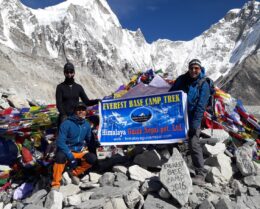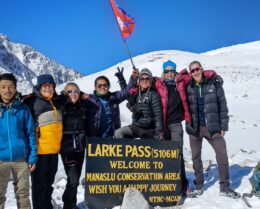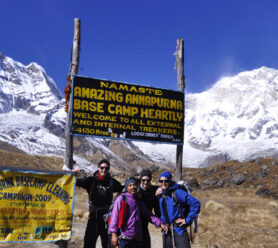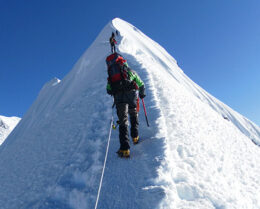Solo VS Group Trek in Annapurna Circuit: Which is Right for You?
UPDATED ON 30 June, 2023
A once-in-a-lifetime trip, hiking across Nepal’s magnificent Annapurna area. The Annapurna Circuit, also known as the Annapurna Round Trek, is one of the most popular and captivating treks in Nepal. With its breathtaking mountain vistas, diverse landscapes, and unique cultural encounters, the Annapurna Circuit offers an unforgettable journey for trekkers.
When planning your trek, one important decision to make is whether to go solo or join a group tour. In this blog post, we will delve into the advantages and considerations of both solo and group treks, helping you determine which option suits you best.
Overview
The Annapurna Circuit trek in Nepal is a breathtaking adventure through stunning landscapes, rich cultural encounters, and challenging mountain passes. Whether you choose to trek solo or join a group tour, this iconic trek offers an unforgettable experience.
With the towering peaks of the Annapurna range, the serene beauty of Tilicho Lake, and the cultural immersion in local villages, the Annapurna Circuit promises an incredible journey.
From navigating the diverse trekking trail to managing altitude sickness and obtaining necessary permits, careful planning and preparation are key to a successful trek. Whether seeking solitude and independence or camaraderie and support, the Annapurna Circuit trek has something to offer for every adventurer.
If You want to visit the Annapurna Circuit trek, make a reservation right now.: Book Now
Solo Trekking: Freedom and Independence
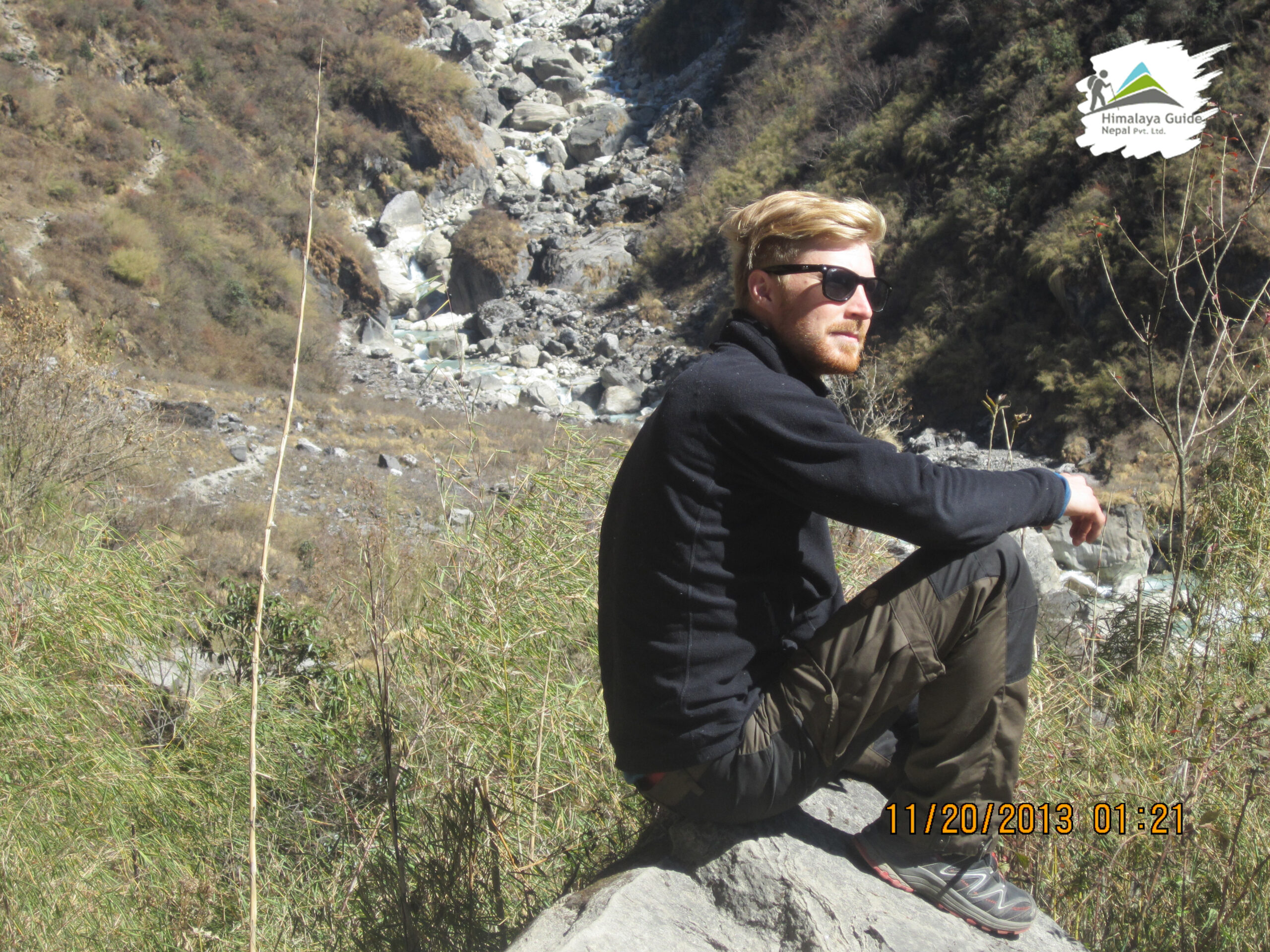
Solo trekking the Annapurna Circuit provides unparalleled freedom and independence. You have complete control over your itinerary, pace, and route selection. It allows you to fully immerse yourself in the wilderness, testing your navigation skills and self-reliance.
The solitude of solo trekking can be immensely rewarding, providing an opportunity for self-discovery and introspection.
Is solo trekking banned in Nepal’s remote regions?
Yes, After a decade of careful consideration, Nepal recently made the decision to implement a ban on solo trekking, which started on April 1, 2023. This announcement has generated mixed reactions within the outdoor community. The government’s primary justification for this measure is to prioritize the safety and well-being of hikers and travelers, particularly in Nepal’s remote regions i.e. Everest, and Annapurna.
Group Trekking: Camaraderie and Support

Group treks offer a different set of advantages. One of the main benefits is the camaraderie and companionship you experience along the journey. Joining a group allows you to meet fellow adventurers from around the world, share stories, and forge lifelong friendships.
Moreover, trekking in a group provides a sense of safety and support. If any challenges arise, you have a team of experienced guides and fellow trekkers to rely on.
Meeting People: Solo Trek vs. Group Trek
When it comes to meeting people, both solo and group treks have their merits.
Solo trekkers often have more opportunities to interact with locals and fellow solo travelers along the trail. The independence of solo trekking encourages conversations and connections with people from diverse backgrounds.
On the other hand, group treks facilitate instant social interactions and create a cohesive community from the start. It’s a fantastic way to meet like-minded adventurers and share the joys of trekking together.
Safety and Support: Group Trek Advantage
Safety is a critical consideration when trekking in remote and high-altitude regions. Joining a group trek provides an added layer of safety and support. Experienced guides accompany group treks, offering valuable knowledge of the trekking trail, weather conditions, and potential risks.
In the case of an emergency, the group can come together to provide assistance and ensure everyone’s well-being. Additionally, group treks often have access to a support team and necessary equipment.
Altitude Sickness: Group Trek Precautions
Altitude sickness is a significant concern during high-altitude treks, such as the Annapurna Circuit. It is a condition that affects individuals differently, and it can be unpredictable. However, in a group trek, guides are trained to identify symptoms of altitude sickness and take appropriate action.
Moreover, they can provide guidance on acclimatization, manage the pace, and arrange necessary rest days. Consequently, having a group to monitor and support you can be immensely beneficial in dealing with altitude-related challenges.
Local Guides: Solo Trek Essential
Solo trekkers have the freedom to choose their own pace and make spontaneous decisions. However, it is crucial to hire a local guide or porter for safety and support. Local tour operators are well-versed in the area’s hiking trails, cultural nuances, and emergency protocols.
They can assist with language barriers, provide insights into local customs, and ensure you navigate the correct paths. Additionally, guides can help with obtaining essential permits, such as the TIMS (Trekkers’ Information Management System) card.
Trekking Season: Impact on Solo and Group Treks
The choice between solo and group trekking can also be influenced by the trekking season. The Annapurna Circuit has two primary trekking seasons: spring (March to May) and autumn (September to November).
During these peak seasons, the trails are bustling with trekkers, and it is relatively easy to find fellow adventurers to join or trek independently. However, if you plan to trek during the off-peak seasons, solo trekking might be more challenging due to the limited number of fellow trekkers.
Trekking Trail Considerations: Solo vs. Group Trek
The Annapurna Circuit trek offers a diverse range of landscapes, ranging from lush forests to arid mountain passes. Furthermore, the trail passes through several remote areas where accommodation and facilities are limited. Consequently, solo trekkers must be prepared to navigate the trekking trail independently.
This involves ensuring they have adequate supplies, including food, water, and camping equipment. In contrast, group trekkers often have logistical support in arranging accommodations, meals, and transport.
Thorong La Pass: A Highlight of the Annapurna Circuit
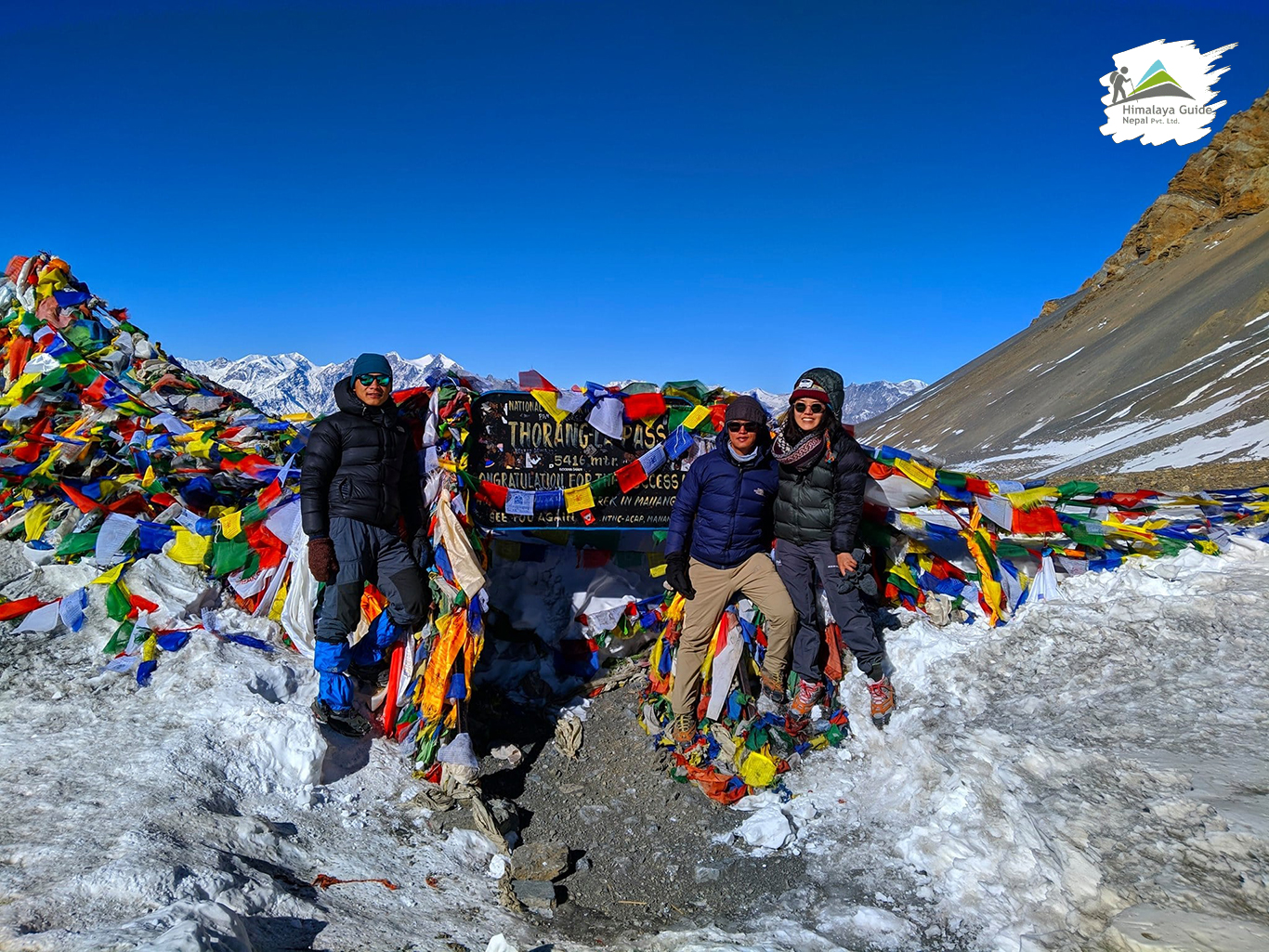
One of the highlights of the Annapurna Circuit is the challenging Thorong La Pass, which stands at an elevation of 5,416 meters (17,769 feet). Moreover, crossing this mountain pass requires proper acclimatization and physical fitness. Additionally, solo trekkers should exercise caution, as the trail can be demanding, and altitude sickness can be a concern.
On the other hand, group trekkers benefit from the support and expertise of guides who ensure a safe crossing and assist with any difficulties that may arise.
What will you come across?
During the Annapurna Circuit trek, whether you choose to go solo or join a group, you will come across a variety of breathtaking landscapes, cultural encounters, and notable landmarks. Here are some of the highlights you can expect to encounter along the trek:
- Annapurna Sanctuary: A natural amphitheater surrounded by towering peaks.
- Tilicho Lake: One of the highest lakes in the world, located at a high altitude.
- Group Tours: Opportunities to join organized group treks for a shared experience.
- Meeting People: Interacting with fellow trekkers and locals along the trail.
- TIMS Card: Obtaining the Trekkers’ Information Management System card for trekking permits.
- Altitude Sickness: Being aware of the risks and taking necessary precautions.
- Local Guides: Hiring experienced guides for safety, navigation, and cultural insights.
- Trekking Season: Considering the peak seasons of spring and autumn for better trail conditions and more fellow trekkers.
- Thorong La Pass: Crossing this challenging mountain pass at an elevation of 5,416 meters.
- Trekking Trail: Navigating diverse landscapes, including forests, mountain passes, and remote areas.
- Accommodations: Arranging lodging and meals, either independently or with group support.
- Cultural Encounters: Experiencing the local culture, customs, and traditions of the Nepalese people.
- Muktinath to Tatopani: Exploring the villages and hot springs along this section of the trek.
- Dirt Road: Dealing with the presence of a dirt road along certain parts of the trail.
- High Altitudes: Adjusting to the effects of high altitude and practicing proper acclimatization.
These highlights offer a glimpse into the unique experiences and challenges you may encounter during the Annapurna Circuit trek, whether you choose to go solo or join a group.
You May Be Interested In:
- Annapurna Circuit Trek Gear Guide for Beginners
- 10 Essential Tips for Annapurna Circuit Trek
- Annapurna Base Camp Trek with a visit to Hot Water Spring in Jhinu Danda
FAQs
What season is ideal for the Annapurna Circuit trek?
The best time to trek the Annapurna Circuit is during the peak seasons of spring (March to May) and autumn (September to November).
How much time does the Annapurna Circuit hike require?
On average, it takes around 15 to 20 days to complete the entire Annapurna Circuit trek, including side trips and rest days.
What licenses are needed for the hike across the Annapurna Circuit?
Two permissions are required: the Trekkers’ Information Management System (TIMS) card and the Annapurna Conservation Area Permit (ACAP).
Is altitude sickness a concern during the Annapurna Circuit trek?
Yes, altitude sickness can be a concern. Proper acclimatization and recognizing symptoms are important. Descending to lower elevations is necessary if symptoms worsen.
Should I join a group trek or trek solo for the Annapurna Circuit?
The choice depends on personal preferences. Solo trekking offers freedom, while group treks provide safety, companionship, and guidance from experienced guides.
Conclusion
Choosing between a solo trek and a group trek is a personal decision that depends on your preferences, experience, and comfort level. Solo trekking offers unparalleled freedom and self-discovery, while group treks provide a sense of camaraderie, safety, and support.
Whichever option you choose, remember to prioritize safety, obtain necessary permits, and make informed decisions.
The Annapurna Circuit awaits, promising a mesmerizing journey through stunning landscapes and cultural encounters. Whether you hike the Annapurna Circuit independently or join a group, the memories and experiences gained will be cherished for a lifetime.

